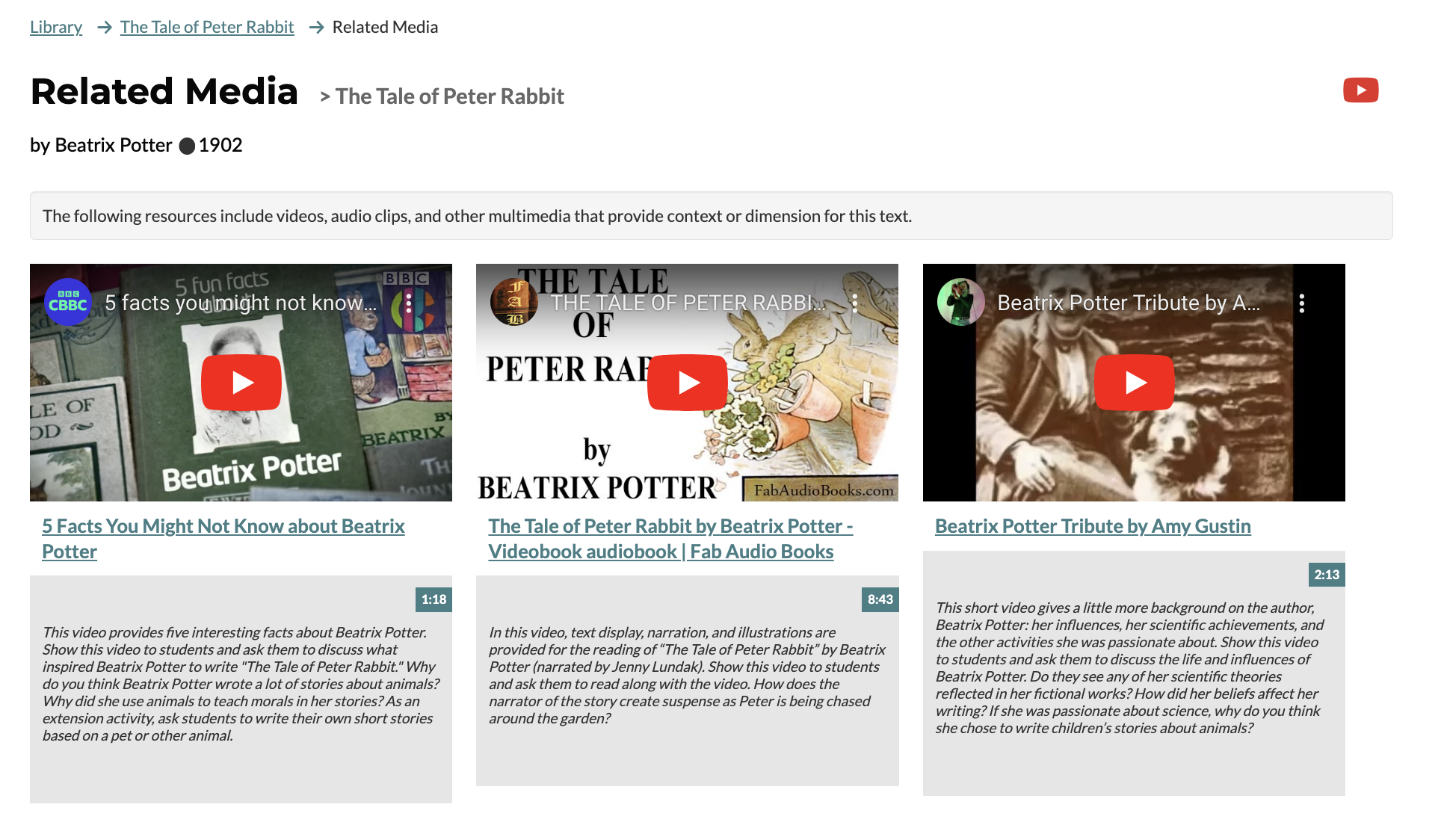 Elementary Classrooms
Teach Important Life Lessons to Elementary Readers with 7 Fables
Elementary Classrooms
Teach Important Life Lessons to Elementary Readers with 7 Fables
Supplement your ELA curriculum and strengthen student reading comprehension with fables from CommonLit’s free digital library.
Fables are a great way to teach students important life lessons. Stories in the fable genre feature personified animals to highlight human weaknesses and share meaningful messages about morality.
CommonLit’s free online reading program offers a wide selection of fables by prominent storytellers, including Beatrix Potter and Aseop. In this blog post, we’ll share 7 fables for elementary students that carry important lessons.
“The Sheep and the Pig” by Carolyn Sherwin Bailey (3rd Grade)
On a bright and early morning, a sheep and a pig set out to find a place to build a home. Along the way, they meet a rabbit, a gray goose, and a rooster. Each of the animals offer their unique skills to help build a home in which they can all live.
Lead a classroom discussion about the theme of the story with Discussion Question 1, “In the context of the story, how do the animals form their own community? What is necessary for animals to join this community? Do you think a community can be successful if only some people help out? Why or why not?”
“The Sparrow’s Quest” by Elizabeth Laird (3rd Grade)
After a sparrow hurts its feet on ice, the sparrow states that ice has the most power in the world. The ice replies that the sun is more powerful because it can melt ice. The sparrow flies to the sun, clouds, wind, mountains, and grass, asking each of them if they have the most power, but all of them say that there is another thing more powerful. Finally, the sparrow asks a worm, which claims that sparrows are the most powerful.
Encourage students to make text-to-self connections with Discussion Question 2, “In this story, each creature or force of nature that the sparrow talks to thinks of themselves as less powerful than something else. When have you seen people compare themselves to others and feel ‘less than?’ When can it be helpful to compare yourself with others? When can it be harmful?”
“Lazy Anansi” by Ghanian Folktale (4th Grade)
Too lazy to cook for himself, a spider named Anansi visits his friends’ houses one by one and asks for a meal from each of them. He ties a string of web from one of his legs to each of his friends’ cooking pots and asks them to tug on the web when the food is finished. The friends pull on Anansi’s strings at the same time, stretching his legs out of shape and preventing him from going to any of their homes to eat.
Ask students to explore the moral of the story with Discussion Question 2: “Why is it important to help others? What do you think Anansi learned after having his legs stretched out?”
“The Tale of Peter Rabbit” by Beatrix Potter (4th Grade)
A mother rabbit leaves her four little rabbits at home and warns them to not enter a human’s garden, where their father had an accident. Peter, the naughty rabbit of the bunch, ignores his mother’s warnings and goes to the garden where he gets into trouble.
After students read this text, show students the Related Media video “5 facts you might not know about Beatrix Potter.” Then, ask them to discuss what inspired Beatrix Potter to write "The Tale of Peter Rabbit." Follow-up with these questions, “Why do you think Beatrix Potter wrote a lot of stories about animals? Why did she use animals to teach morals in her stories?” Later, as an extension activity, have students write their own short stories based on a pet or other animal.

“The Ants and the Grasshopper” by Aseop (5th Grade)
One autumn day, a hungry grasshopper asks for a bite to eat from a family of ants. After working all summer to stock up for the winter, the ants refuse to share their food with the grasshopper who spent the summer fooling around and not collecting food.
Ask students to take notes on the problem the grasshopper faces and how the ants' response contributes to the theme and moral of the fable. Then, they can use their notes to help them answer Assessment Question 5: “Using complete sentences, explain the central moral, or lesson, of the story. Use evidence from the text to support your answer.”
“The Boy Who Cried Wolf” by Aesop (5th Grade)
To entertain himself, a bored shepherd boy shouts that a wolf is chasing the sheep. Once the villagers arrive to help, they discover that there is no wolf. The boy cries wolf again and the villagers warn him to not cry wolf when there isn’t one. When a real wolf comes around, the boy calls for help, but no one comes.
After students finish reading this text, have them answer Discussion Question 3 to understand the lesson of the story, “What is the author's message about power, truth, and lies? How are they connected? Use evidence from this text, from your own experience, and from other art or literature to answer this question.”
“The Lion and the Mouse” by Aesop (5th Grade)
After waking an angry Lion from his nap, a Mouse begs for her life, saying that she will repay him someday. The Lion doubts the Mouse could ever return the favor, but he lets her go. One day, the Lion steps into a hunter’s net and roars for help. The Mouse answers the Lion’s cries and gnaws the net, setting him free.
To help students understand the moral of the story, ask them Discussion Question 3, “In the context of this story, how can people – especially the small and weak – overcome adversity? Cite evidence from this text, your own experience, and other literature, art, or history in your answer.”
Next Steps
Looking for more great fables for elementary students? Check out our CommonLit library!
Build your reading curriculum with this ready-to-use thematic unit on fables, and discover more fables by Aesop in CommonLit’s free digital library.
If you’re interested in learning all about CommonLit’s free digital literacy program, join one of our upcoming webinars!

